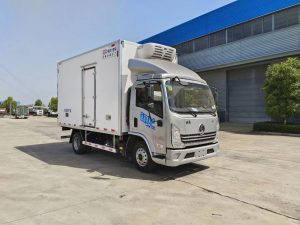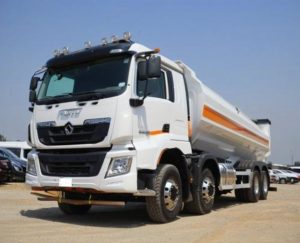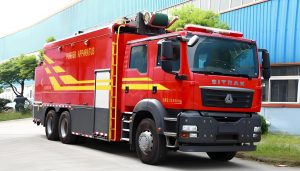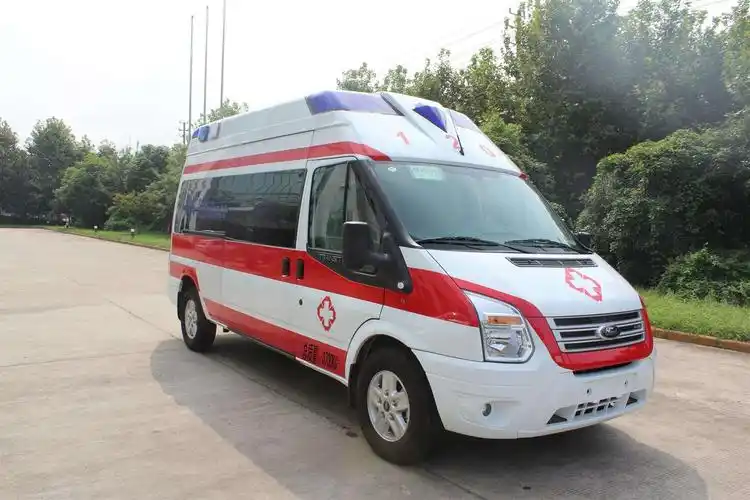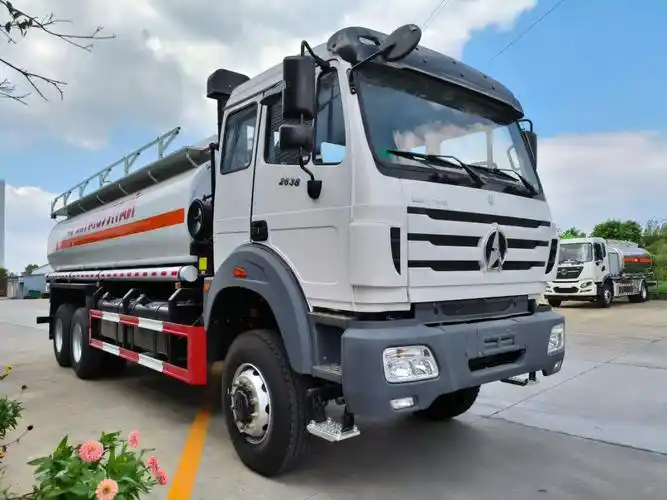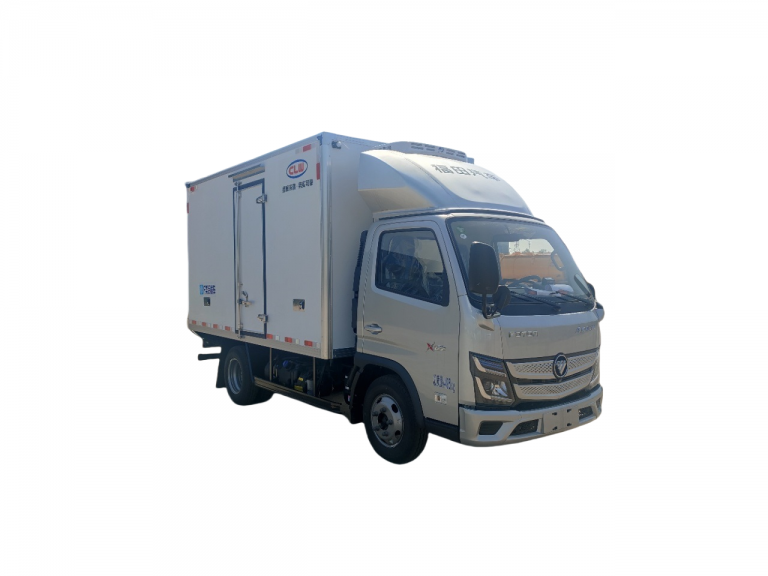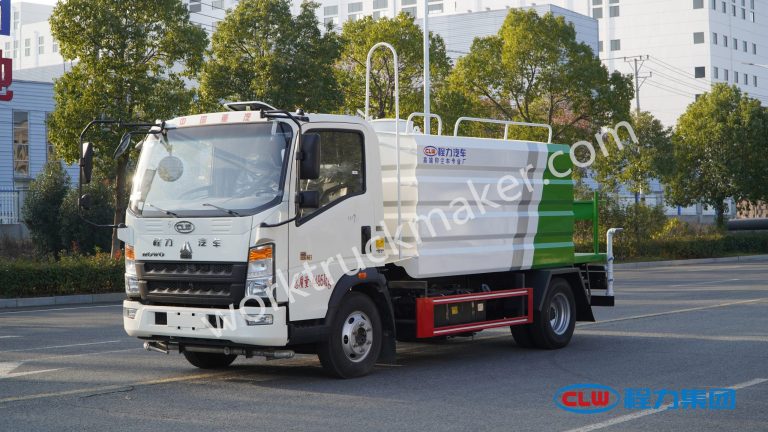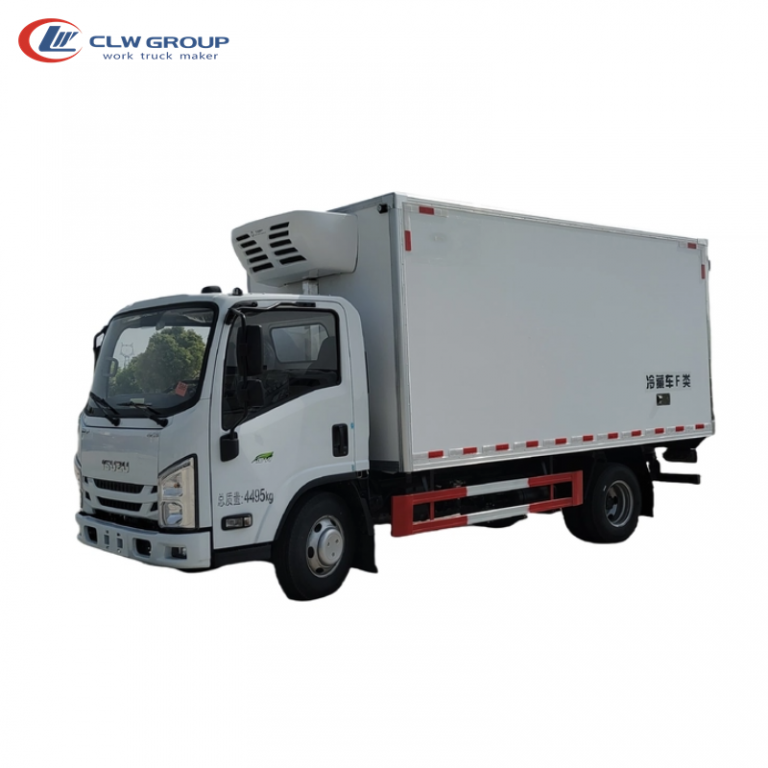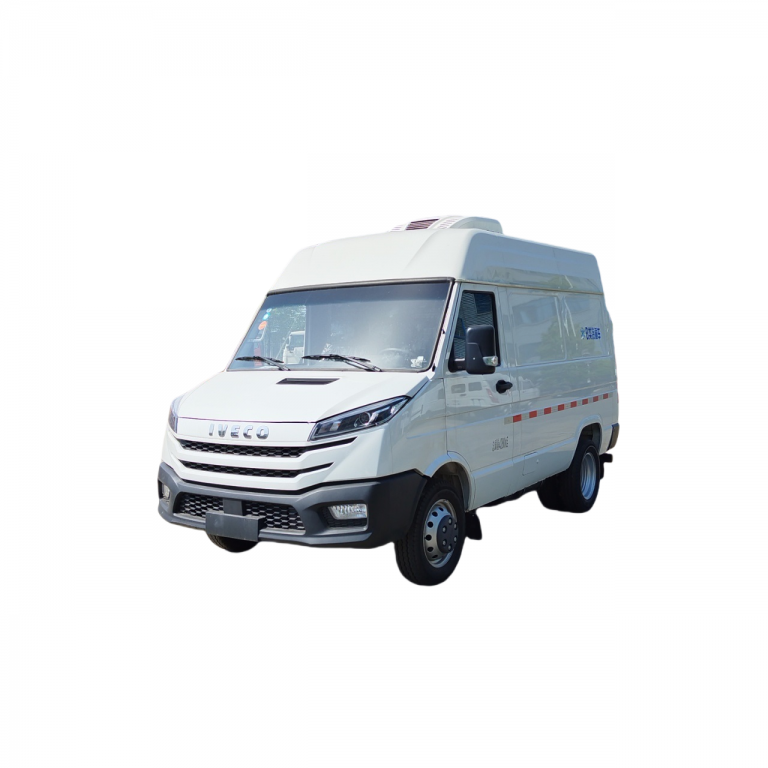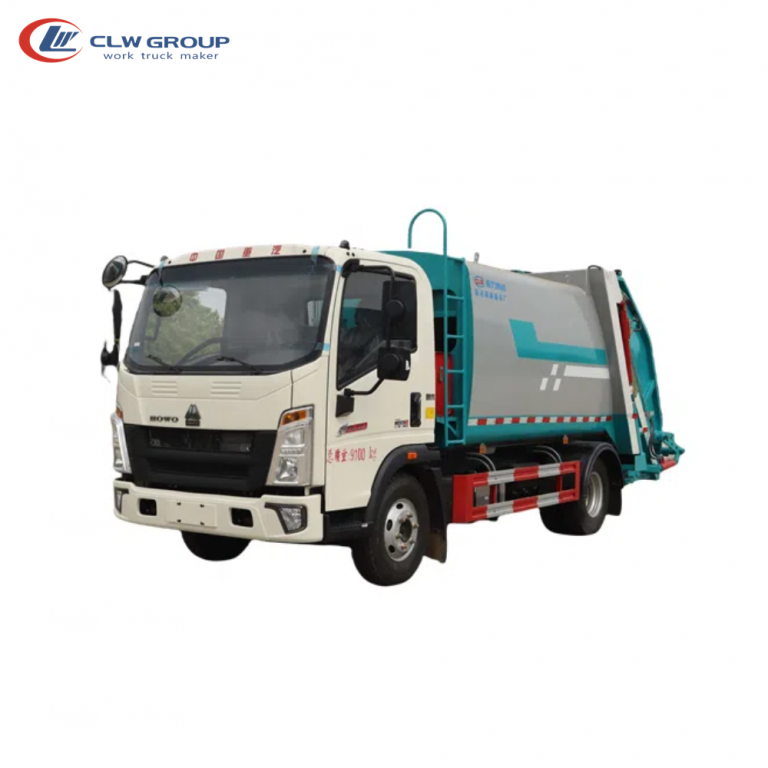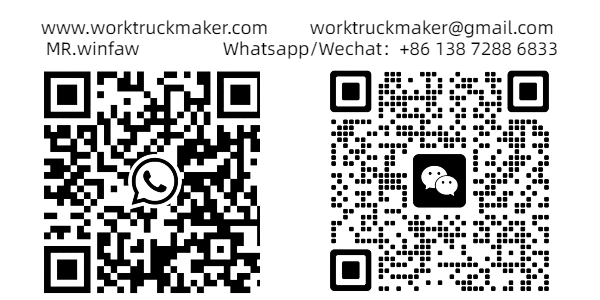Table of Contents
Toggle
Special vehicles play a crucial role in various sectors of society, from finance and military operations to law enforcement and emergency services. These specialized machines are designed to meet specific needs and perform tasks that regular vehicles cannot. As technology advances, the capabilities and applications of special vehicles continue to expand, shaping the way we approach complex challenges in different fields.
This article takes a deep dive into the world of special vehicles, exploring their diverse types and purposes. It examines special purpose vehicles in finance, military applications, law enforcement use, and emergency services. The discussion also covers commercial special vehicles, luxury and performance models, and their environmental impact. By the end, readers will have a comprehensive understanding of these unique and essential vehicles that drive innovation and efficiency across industries.
Special Purpose Vehicles (SPVs) in Finance
Definition
Special Purpose Vehicles (SPVs), also known as Special Purpose Entities (SPEs), are separate legal entities created by organizations for specific objectives. These entities have their own assets, liabilities, and legal status, distinct from their parent companies. SPVs are designed to isolate financial risk and can continue to operate even if the parent company faces bankruptcy. This characteristic often leads to SPVs being referred to as “bankruptcy-remote entities.”
SPVs can take various legal forms, including partnerships, limited partnerships, or joint ventures. In some cases, regulations require that the SPV not be owned by the company on whose behalf it is created, further emphasizing its separation from the parent organization.
Uses
SPVs serve multiple purposes in the financial world, providing companies with strategic advantages in risk management and financial operations. Here are some common uses of SPVs:
- Risk Sharing: Companies often create SPVs to isolate exceptionally risky projects. By doing so, they can legally separate the risk and share it with other investors, protecting the parent company from potential negative outcomes.
- Securitization: Banks and financial institutions frequently use SPVs for loan securitization. For example, when issuing mortgage-backed securities, a bank can create an SPV to separate the loans from its other obligations. This structure allows investors in the mortgage-backed securities to receive payments before other creditors of the bank.
- Asset Transfer: SPVs facilitate the transfer of hard-to-move assets. Companies can create an SPV to own specific assets, making it easier to transfer ownership through the sale of the SPV itself during mergers and acquisitions.
- Property Sales: In situations where property sales taxes exceed capital gains taxes, companies may create SPVs to own properties for sale. By selling the SPV instead of the properties directly, they can pay tax on the capital gain rather than the higher property sales tax.
- Joint Ventures: In venture capitalism, groups of investors use SPVs to pool their assets for launching new businesses or investing in startups.
Risks
While SPVs offer numerous benefits, they also come with potential risks and challenges:
- Reduced Transparency: SPVs can mask crucial financial information from investors. Since their financials may not appear on the parent company’s balance sheet, investors might not get a complete view of the company’s financial situation.
- Limited Capital Access: SPVs often have lower access to capital at the vehicle level, as they lack the same credit standing as their sponsor companies.
- Regulatory Challenges: Companies using SPVs may face problematic regulatory changes, which could significantly impact their operations and financial structure.
- Accounting Complexities: The sale of assets held by an SPV can trigger Mark to Market accounting rules, potentially causing significant impacts on the sponsor’s balance sheet.
- Reputational Risks: SPVs sometimes carry negative connotations due to their association with past financial scandals, such as the Enron case. This can lead to increased scrutiny and skepticism from investors and regulators.
- Investor Risk: There’s a risk that investors may not fully understand the complexities associated with investing in an SPV. While SPVs provide greater access to deals, they may lack focus on the underlying investments and their potential outcomes.
- Fraud Potential: The lack of stringent oversight in SPVs can create an environment susceptible to fraud and abuse. Unlike public companies or VC-backed deals, SPVs often have fewer regulatory requirements, potentially exposing smaller investors to riskier deals.
Military Special Vehicles
Military special vehicles play a crucial role in modern warfare, offering a wide range of capabilities to support various military operations. These vehicles are designed to meet specific needs and perform tasks that regular vehicles cannot. They are essential for enhancing mobility, firepower, and protection on the battlefield.
Armored Vehicles
Armored vehicles form the backbone of many military ground operations. They provide protection for troops and equipment while offering significant firepower. Some key types of armored vehicles include:
- Main Battle Tanks (MBTs): These are the most powerful armored vehicles on the battlefield. For example, the M1 Abrams is a widely used MBT in the U.S. military, with approximately 5,000 in active use and 3,600 in storage.
- Infantry Fighting Vehicles (IFVs): These vehicles transport infantry while providing fire support. The Bradley Fighting Vehicle is a prominent example, with over 6,700 units in service.
- Light Armored Vehicles (LAVs): These agile and versatile platforms are designed for rapid deployment and reconnaissance. The LAV-25, used by the U.S. Marine Corps, is a widely recognized variant.
- Mine-Resistant Ambush Protected (MRAP) vehicles: These vehicles are designed to withstand improvised explosive devices (IEDs) and ambushes. Examples include the RG-31 Nyala and the MaxxPro.
Transport Vehicles
Transport vehicles are essential for moving troops, supplies, and equipment across various terrains. They come in different sizes and configurations to meet diverse operational needs:
- Armored Personnel Carriers (APCs): These vehicles are designed to transport infantry troops into battle. The M113 is a classic example, with around 6,000 units still in use.
- Utility Vehicles: These versatile vehicles handle various tasks, from troop transport to cargo hauling. The Humvee (High Mobility Multipurpose Wheeled Vehicle) is a well-known example, with approximately 160,000 in service.
- Amphibious Vehicles: These vehicles can operate both on land and in water, facilitating seamless transitions between naval and ground operations. The Assault Amphibious Vehicle (AAV) is widely used by the U.S. Marine Corps.
Combat Vehicles
Combat vehicles are specifically designed for engaging enemy forces and providing fire support. They combine mobility, firepower, and protection:
- Self-Propelled Artillery: These vehicles carry artillery pieces, allowing for mobile fire support. The M109 Paladin is a widely used self-propelled howitzer.
- Tank Destroyers: These vehicles are designed to engage and destroy enemy tanks. Modern tank destroyers often focus on mobility and stealth, sometimes utilizing guided missile systems.
- Self-Propelled Anti-Aircraft Vehicles: These vehicles provide air defense for ground forces. The ZSU-23-4 Shilka is a notable example that remains in service with various countries.
- Combat Engineering Vehicles: These specialized vehicles perform tasks such as obstacle clearing and route opening. The M9 Armored Combat Earthmover is an example of such a vehicle.
Military special vehicles continue to evolve, incorporating advanced technologies to meet the changing demands of modern warfare. From heavily armored tanks to agile reconnaissance vehicles, each type serves a specific purpose in military operations, contributing to the overall effectiveness and versatility of armed forces worldwide.
Law Enforcement Special Vehicles
Law enforcement agencies rely on a variety of specialized vehicles to carry out their duties effectively and safely. These vehicles are designed to meet the unique challenges faced by police forces in different situations. From high-risk operations to crowd control and surveillance, law enforcement special vehicles play a crucial role in maintaining public safety and order.
SWAT Vehicles
Special Weapons And Tactics (SWAT) teams require vehicles that offer protection, mobility, and tactical advantages. SWAT vehicles are designed to withstand various threats and facilitate rapid deployment of heavily armed officers into dangerous situations.
The BearCat series, manufactured by Lenco, has become the standard for SWAT vehicles in the United States. These 4×4 armored vehicles are built from the ground up and can be configured with two or four doors. The BearCat’s armor provides protection against assault rifle rounds, grenade-sized explosives, and other improvised explosive devices (IEDs), making it suitable for intense law enforcement work that doesn’t require full military-grade protection.
Another popular option is the BATT series, particularly the BATT-X variant. This vehicle can be armored up to and beyond the National Institute of Justice’s Level 4, offering protection against high-caliber sniper rifles and armor-piercing assault rifles. The BATT-X features a 360-degree swiveling roof turret with gun ports, enhancing its tactical capabilities.
Some law enforcement agencies also utilize de-militarized armored personnel carriers. For example, the Phoenix Police Department has used an M113 armored personnel carrier, while the Florida Highway Patrol operates three Cadillac Gage Commandos.
Surveillance Vehicles
Surveillance is a critical component of law enforcement investigations. Private investigators and law enforcement agencies use specialized vehicles to conduct covert observations and gather evidence without drawing attention.
These vehicles are typically non-descript and reliable, allowing investigators to follow suspects and monitor activities without arousing suspicion. They are often equipped with advanced technology for recording, communication, and data analysis.
Some surveillance vehicles feature:
- GPS tracking systems for real-time location monitoring
- Hidden cameras and microphones for audio and video recording
- Satellite communication systems for independent, secure communication
- Thermal imaging cameras for night operations
- Advanced computer systems for data processing and analysis
Riot Control Vehicles
Riot control vehicles, also known as crowd control vehicles, are designed to maintain public order during large gatherings or protests that may escalate into violent confrontations. These vehicles are equipped with various non-lethal and less-lethal tools to disperse crowds and restore order without resorting to lethal force.
Key features of riot control vehicles include:
- Water cannons: Many vehicles are equipped with high-pressure water cannons capable of dispersing crowds. For example, some models can fire pressurized water from tanks holding up to 10,000 liters (2,600 gallons).
- Tear gas dispensers: Vehicles often have tanks for tear gas (CS) or pepper spray (OC), which can be mixed with water or deployed separately.
- Dye markers: Some vehicles can dispense colored dye to mark individuals for later identification.
- Protective features: Riot control vehicles are designed with armor plating, reinforced windows, and fire suppression systems to protect the crew and vehicle from attacks.
- Crowd management tools: Many vehicles feature loudspeakers, strobe lights, and public address systems to communicate with crowds and aid in dispersal efforts.
- Obstacle removal: Some models, like the Ader Toma, include hydraulic rams or bulldozer attachments to clear roadblocks and barricades.
- Advanced surveillance: Many riot control vehicles are equipped with thermal cameras, night vision capabilities, and 360-degree monitoring systems to assess situations in real-time.
These specialized law enforcement vehicles continue to evolve, incorporating new technologies and design features to meet the changing needs of police forces worldwide. From protecting officers in high-risk situations to managing large crowds and conducting covert surveillance, these vehicles play an essential role in modern law enforcement operations.
Emergency Services Special Vehicles
Emergency services special vehicles play a crucial role in responding to various crises and providing essential assistance. These vehicles are designed to meet specific needs and are equipped with specialized tools and equipment to handle different emergency situations effectively.
Fire Trucks
Fire trucks have been indispensable in firefighting efforts since the early days of automobiles. They provide firefighters with a quick and efficient means to reach emergencies, transport personnel, and carry vital tools, hoses, equipment, and a limited water supply.
Conventional fire trucks, often referred to as “pumpers” or fire engines, are the most common type seen at fire scenes. They typically feature:
- A water tank
- A powerful water pump
- Hundreds or thousands of feet of hoses
- Additional materials, nozzles, and tools
Fire engines are classified into different types based on their capabilities and intended use:
- Type I and II engines are designed for urban, suburban, and rural departments, carrying all necessary NFPA firefighting equipment.
- Type III and IV engines, also known as “wildland” fire engines, are built on commercial 4×4 chassis and are used in rural and wildland areas.
- Type V, VI, and VII engines are usually pick-up trucks with four-wheel drive and medium-duty chassis, capable of carrying heavier loads.
Specialized fire trucks include:
- Turntable ladder trucks with giant telescoping ladders for accessing high locations
- Heavy rescue vehicles equipped for technical rescue missions
- Quints, which perform multiple roles and maintain a constant water supply
- A-Wagons, designed to combat brush and grass fires
- Water tenders, primarily used to collect, transport, and deliver water to emergency fire scenes
Ambulances
Ambulances are essential emergency vehicles used to treat and transport sick or injured individuals to medical facilities. They come in various types, each designed for specific purposes:
- First responder ambulances: Small, fast vehicles that can navigate tight locations and heavy traffic easily.
- Isolation ambulances: Used to transport patients requiring isolation due to exposure to hazardous chemicals, radiation, or highly contagious diseases.
- Advanced life support ambulances: Also known as mobile ICUs, equipped with advanced medical equipment to treat life-threatening conditions.
- Basic life support ambulances: Used for treating minor medical problems and transporting patients to medical institutions.
- Multiple victim assistance ambulances (MVAs): Common at public events, functioning more like first aid stations.
- Patient transport vehicles: Used for transporting patients recovering from surgery or those who are very frail.
- Neonatal ambulances: Specialized vehicles for attending to deliveries and post-delivery needs, as well as transporting babies to specialized hospitals.
- Bus ambulances: Used in situations where many people have been injured, such as earthquakes, hurricanes, or building collapses.
Rescue Vehicles
Rescue vehicles are designed to handle emergencies that require rescuing individuals trapped by debris, caught in dangerous spots, or unable to move due to injury. These vehicles carry specialized equipment such as ropes and other tools to extract people from tight spaces or safely transfer them onto stretchers.
One notable type of rescue vehicle is the Rapid Response Vehicle (RRV). RRVs are designed to reach patients as quickly as possible and are typically smaller than traditional ambulances. Key features of RRVs include:
- Staffed by a qualified paramedic capable of administering life-saving treatment
- Ability to be dispatched ahead of an ambulance or treat patients independently
- Crucial in providing early clinical intervention for life-threatening conditions
- Equipped to handle a wide range of emergencies, including defibrillation, airway protection, and drug administration
- Effective in managing demand and arranging appropriate care pathways for less serious calls
RRVs offer several advantages over traditional ambulances, including faster mobilization, higher achievement of sub-8 minute response times, and greater availability throughout the working day.
Commercial Special Vehicles
Commercial special vehicles play a crucial role in various industries, enhancing efficiency and productivity in construction, mining, and agriculture. These specialized machines are designed to handle specific tasks and operate in challenging environments.
Construction
Construction vehicles, also known as heavy equipment, are the backbone of the construction industry. They enable workers to move heavy loads, reshape the ground, and complete large-scale projects in less time and with less effort than ever before. Some essential construction vehicles include:
- Excavators: Used for digging, lifting heavy loads, and moving materials. They come in various types, such as crawler excavators, wheeled excavators, and long-reach excavators.
- Bulldozers: These powerful machines are used for pushing and moving large amounts of earth, debris, and other materials.
- Loaders: Including skid steer loaders and wheel loaders, these versatile machines are used for moving loose materials and loading trucks.
- Dump Trucks: Available in various sizes, dump trucks can transport materials weighing from one ton up to 500 tons in a single load.
- Cranes: These lifting machines come in different types and sizes, with the largest capable of lifting loads up to 3,000 tons.
- Compactors: Used to prepare and stabilize the ground at construction sites, making it resistant to erosion and movement.
Mining
Mining vehicles are essential for extracting and transporting valuable minerals and resources. These machines are designed to handle heavy loads and operate in harsh working conditions. Some key mining vehicles include:
- Dump Trucks: In mining operations, specialized dump trucks like the BelAZ 75710 can haul up to 450 tons per load, making them crucial for transporting extracted materials.
- Excavators: With bucket capacities ranging from 1 to 80 cubic meters, excavators are used in both surface and underground mining operations for digging and removing large volumes of earth and minerals.
- Draglines: These massive machines are used for surface mining, capable of moving large amounts of overburden to expose the underlying minerals.
- Continuous Miners: Used extensively in underground mining operations, these machines can extract up to 5 tons of coal per minute without the need for drilling and blasting.
- Shuttle Cars: These vehicles transport extracted materials within underground mines, playing a crucial role in the mining process.
Agriculture
Agricultural vehicles are designed to optimize productivity and complete essential tasks such as working the soil, harvesting crops, and transporting materials. Some important agricultural vehicles include:
- Tractors: The most common farm vehicle, tractors are multi-use instruments used for plowing, tilling, seeding, and harvesting. They come in various types, including compact tractors for smaller farms and specialty crop tractors for orchards and vineyards.
- Combine Harvesters: These machines are essential for grain farmers, as they can reap, thresh, and winnow crops like wheat, corn, and soybeans in a single pass.
- Seeders: These vehicles sow seeds across large plots of land quickly and efficiently, with various types available such as broadcast, precision, and air seeders.
- Sprayers: Used to spread liquid fertilizers, pesticides, and other chemicals on crops, sprayers come in different types, including boom sprayers, air-assisted sprayers, and mist sprayers.
- Balers: Essential for hay, straw, and corn stalk collection, balers compress and package these materials into manageable bales for storage or transport.
Commercial special vehicles continue to evolve, incorporating advanced technologies to meet the changing demands of their respective industries. From construction sites to mines and farms, these specialized machines play a vital role in driving productivity and efficiency across various sectors.
Luxury and Performance Special Vehicles
Luxury and performance special vehicles represent the pinnacle of automotive engineering and design. These exclusive automobiles cater to discerning enthusiasts who seek unparalleled craftsmanship, cutting-edge technology, and extraordinary performance. From limited editions to bespoke creations, these vehicles showcase the best of what the automotive industry has to offer.
Limited Editions
Limited edition cars are produced in small numbers, often featuring unique styling cues or performance enhancements that set them apart from their standard counterparts. These vehicles are highly sought after by collectors and enthusiasts for several reasons:
- Exclusivity: The rarity of limited edition models makes them more desirable and exclusive.
- Enhanced features: They often offer more power or luxurious amenities compared to regular production models.
- Investment potential: Limited editions tend to appreciate in value over time, making them attractive to collectors.
Some notable examples of limited edition luxury and performance vehicles include:
- Aston Martin DBS Superleggera Concorde: Limited to just ten examples, this model celebrates the 50th anniversary of the iconic Concorde passenger jet and British Airways’ centenary.
- Audi R8 Green Hell: A tribute to Audi’s success in the Nürburgring 24 Hours race, this special edition is limited to 50 units worldwide.
- BMW M4 Competition x KITH: Created in collaboration with New York lifestyle brand Kith, only 150 units of this unique model were produced.
- Bugatti La Voiture Noire: A modern interpretation of Jean Bugatti’s famous Type 57 SC Atlantic, this one-of-a-kind creation pays homage to Bugatti’s rich heritage.
- Lamborghini Sián: Limited to 63 units, this model represents the fastest Lamborghini ever produced, featuring a futuristic design that draws on the brand’s iconic style.
Bespoke Creations
Bespoke creations take luxury and performance vehicles to the next level, offering customers the opportunity to create truly unique automobiles tailored to their specific preferences. These one-of-a-kind masterpieces showcase the pinnacle of automotive craftsmanship and personalization.
Some examples of bespoke creations include:
- Ferrari BR20: Developed on the GTC4Lusso platform, this two-seater V12 coupé pays homage to the magnificent Ferrari coupés of the 1950s and 60s.
- Pagani Huayra Tricolore: Created to celebrate the 60th anniversary of the Frecce Tricolori, the Italian Air Force Aerobatic Team, only three examples of this extraordinary vehicle were built.
- Porsche 911 Turbo S ‘One of a Kind’ Pedro Rodríguez: Commissioned as a tribute to the Mexican racing driver, this unique 911 Turbo S features iconic Gulf blue paint with an orange stripe.
- Rolls-Royce Boat Tail: This bespoke creation represents Rolls-Royce’s commitment to coachbuilding, continuing the legacy that began with the Sweptail model in 2017.
The world of luxury and performance special vehicles continues to evolve, with manufacturers pushing the boundaries of design, technology, and customization. As the automotive industry embraces new technologies, the future of these exclusive automobiles holds exciting possibilities, including the integration of artificial intelligence in design processes and the use of augmented reality for virtual customization experiences.
Environmental Impact of Special Vehicles
Special vehicles, while essential for various industries and services, have a significant environmental impact, particularly in terms of emissions and sustainability. Understanding these effects has become crucial as the world grapples with climate change and air pollution.
Emissions
The transportation sector, including special vehicles, has a substantial carbon footprint. A typical passenger vehicle emits about 4.6 metric tons of carbon dioxide per year, assuming an average fuel economy of 22.2 miles per gallon and annual mileage of 11,500 miles. However, special vehicles often have higher emissions due to their size and power requirements.
The emissions from vehicles include:
- Carbon dioxide (CO2): The primary greenhouse gas contributing to climate change.
- Methane (CH4) and nitrous oxide (N2O): These gasses have a higher global warming potential than CO2.
- Particulate matter (PM): Fine particles that pose serious health risks.
- Volatile Organic Compounds (VOCs): These react with nitrogen oxides to form ground-level ozone, a main component of smog.
- Nitrogen oxides (NOx): Contributors to ground-level ozone and particulate matter formation.
- Carbon monoxide (CO): A poisonous gas formed by fossil fuel combustion.
- Sulfur dioxide (SO2): Produced by burning sulfur-containing fuels, especially diesel.
Heavy-duty vehicles, which include many special vehicles, comprise only about 10% of all vehicles on the road. However, they generate more than 25% of global warming emissions, 45% of NOx emissions, and nearly 60% of direct PM2.5 emissions from on-road vehicles in the transportation sector.
Sustainability Efforts
Recognizing the environmental impact of special vehicles, many manufacturers are implementing sustainability initiatives:
- Electric Vehicle Development: Companies like Toyota, Mercedes-Benz, and Hyundai have ambitious plans to electrify their vehicle fleets. For instance, Mercedes-Benz aims to make its entire fleet carbon neutral by 2039.
- Circular Economy: Volvo has adopted circular economic principles to reduce the impact of its designs and manufacturing processes. BMW repurposes approximately 70% of the leftover aluminum and steel offcuts from its production process.
- Sustainable Supply Chains: Manufacturers are working to create transparency along their supply chains to ensure sustainability. This includes tracing the origin of parts and implementing innovative solutions such as battery recycling and biodegradable components.
- Carbon Footprint Reduction: Companies like GM and Ford have set targets to reduce CO2 emissions across their entire value chains. BMW Group, for example, has a clear roadmap for 2030 to significantly reduce its carbon footprint.
- Innovative Technologies: Tesla has a five-step plan to accelerate its EV production line and contribute to a sustainable future. Other companies are exploring alternative powertrain solutions, such as fuel cells, to reduce carbon emissions.
These efforts demonstrate the automotive industry’s commitment to addressing the environmental impact of special vehicles. As regulations become more stringent and public awareness grows, we can expect to see continued innovation in this area, leading to cleaner, more sustainable special vehicles in the future.
Conclusion
Special vehicles have a significant impact on various sectors of society, from finance and military operations to law enforcement and emergency services. Their diverse applications and specialized designs enable them to meet unique challenges and perform tasks that regular vehicles cannot. As technology continues to advance, these vehicles are evolving to become more efficient, versatile, and environmentally friendly.
The future of special vehicles looks promising, with ongoing efforts to improve their sustainability and reduce their environmental impact. Manufacturers are investing in electric and hybrid technologies, exploring alternative fuels, and implementing circular economy principles in their production processes. These developments are poised to revolutionize the industry, leading to cleaner, more efficient special vehicles that can meet the complex demands of modern society while minimizing their carbon footprint.

